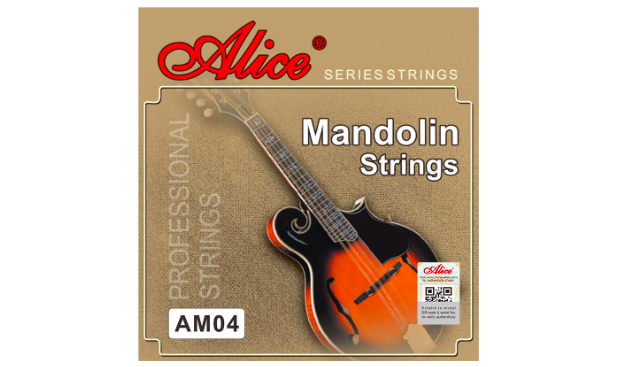How to Choose the Best Mandolin Strings
What do these songs have in common? “Maggie May” by Rod Stewart, “Ho Hey” by the Lumineers, and the traditional tune “On Top of Old Smokey.” If you guessed that each song includes a mandolin, you nailed it. The mandolin adds a unique tone to any song and can complement other instruments from the band. But it takes more than a great mandolin player to get that distinctive sound right. Undoubtedly, these musicians use only the best mandolin strings on the market.

The Importance of Choosing the Best Mandolin Strings
Choosing strings can be a tricky task but worth the time invested. This article will help you to determine the best mandolin strings for your musical style. By changing mandolin strings, you can make the sound unique and enhance playability. The result will be the sound you've been chasing.
How to Choose the Best Mandolin Strings
When choosing the best mandolin strings, there are many options to consider. Those options can include price, materials, string thickness, and brands. The search can be overwhelming. It is essential to choose the best mandolin strings that fit your style. To make the search easier, consider the following three factors:
1. String Gauge:
Strings come in different diameters, also known as thickness. Packaging for mandolin strings will show thickness in one of three categories. Those three categories are Light, Medium, and Heavy. The 8-string mandolin needs two strings for each string key: GG, DD, AA, and EE. The diameter of each string set is as follows:
- Light: .010, .014, .024, .038
- Medium: .011, .015, .026, .040
- Heavy: .0115, .016, .026, .041
According to your style and experience level, you may want to change your mandolin strings. Playing the mandolin often will help you choose the best mandolin strings.
2. Material:
Mandolin strings are made with different materials. Those materials vary depending on the brand and the sound you want to achieve.
- Phosphor Bronze: This string material is common and popular with musicians for the 8-string mandolin. These tend to last the longest.
- Nickel Plated Steel: Strings with this material are common with musicians who play the electric mandolin.
- Stainless Steel: This material is hard on the fingers but resistant to oxidation. If you sweat a lot, these strings can be a great choice.
- Chrome Steel: If you want clarity, change your mandolin strings to a set using this material. Steel core strings provide a clear and concise sound.
- Polymer Coating: Like stainless steel, the polymer-coated strings also are great at repelling oxidation.

3. Winding:
Winding refers to the outer wrap of each string that goes around the core. There are two common types of string windings for 8-string mandolins. The two types of windings are round and flat wounds.
- Round Wound: Most mandolins use round wound strings. When using these types of strings, you should know that noise from the ridges may be heard when fretting.
- Flat Wound: This type of string is less common. Flat wound strings are made the same way as round wound strings, yet the wrap is made with a smoother surface. The smoothness reduces noise and makes for smoother fretting.
How to String a Mandolin
Replacing the strings on your 8-string mandolin can be confusing, especially for beginners. Learning the process will become easier with time. The tools you will need are new strings, wire cutters, and a string winder. Once the strings are replaced, you may need a tuner.
Step 1: Remove the old strings one key set at a time. DO NOT remove all strings simultaneously, or you will need to reset the bridge. Remove the G strings and replace them before continuing with the D, A, and E strings. Remove and replace each string set before working on the next string set.

Step 2: Bend the loop of the string you are working on to a 45° angle, then attach the loop to the tailpiece. Stretch the string towards the nut and position the string in the correct slot in the nut.
Step 3: Thread the string through the hold in the tuning peg. Hold the string with one hand. Turn the tuning peg counterclockwise with the free hand until the string is tight. Wrap the string around the post, leaving the string loose.
Repeat steps 1-3 for the rest of the strings continuing with D, A, and finishing with the E string. The A and E strings should be tightened clockwise. Be mindful that the G and D strings should be tightened counterclockwise.

Alice Mandolin Strings AM04
There are many brands of strings and options on the market. The task of choosing the best mandolin strings can be difficult. A musician can lose sight of what differentiates one brand from another. By popular opinion, the best mandolin strings are the AM04 made by Alice. The quality, design, and crisp and clear tone produced by AM04 strings are superior. Alice prides itself on delivering the highest quality strings for the 8-string mandolin. If you want the best sound and durability, consider upgrading to the AM04s by Alice.
Conclusion
Alice is known for designing the best mandolin strings available. We use decades of experience engineering strings. We use manufacturers that deliver the highest quality strings for the 8-string mandolin. Musicians around the globe use Alice strings and accessories. Our strings are often mentioned in major publications. Alice engineers are always looking to create the next musical innovation. Don't miss out; click to learn more about what Alice is working on!
